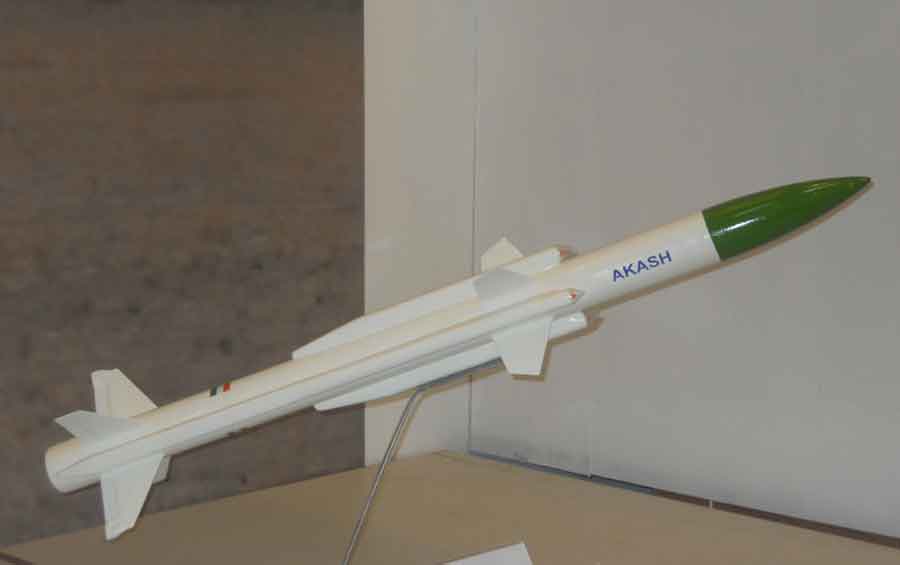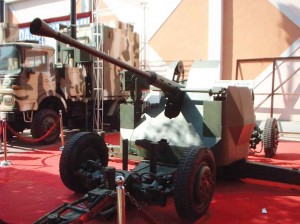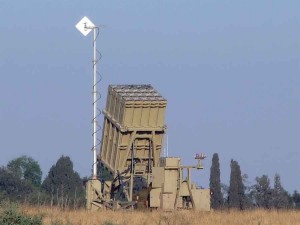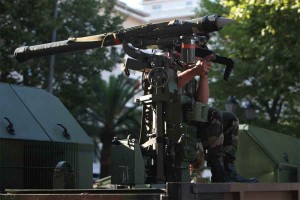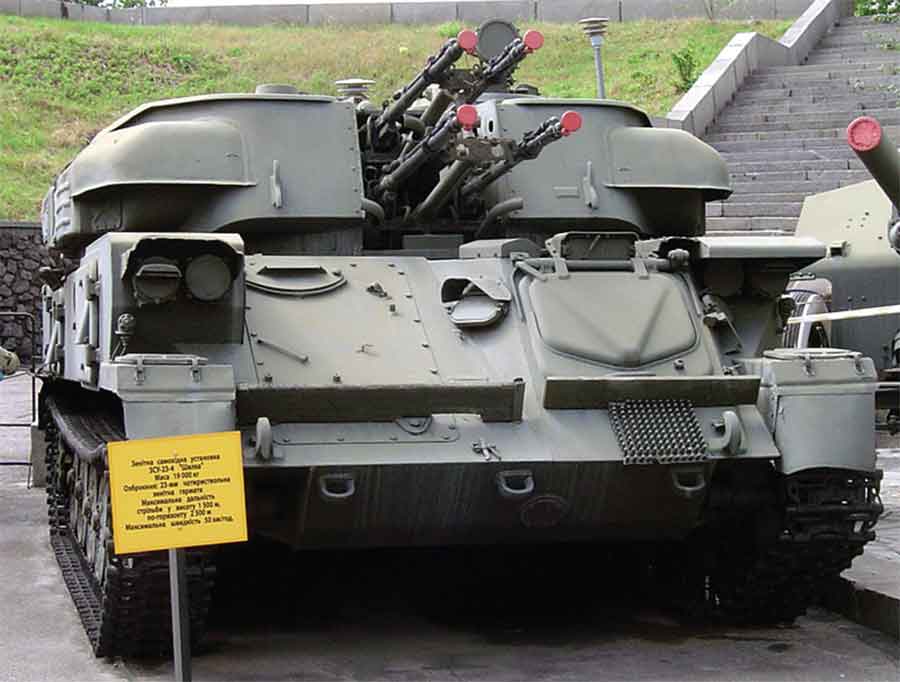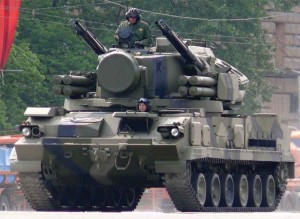The air threat envelope is increasing exponentially both in range and altitude, making it essential that the range and altitude of coverage of GBADWS is increased commensurately. Air defence in the emerging battle-space therefore necessitates deployment of multi-layered and multi-tiered mix of weapon systems that are hardened to function in a hostile cyber and electronic warfare environment. Overall, within the gamut of the Indian Army’s vision of the future, AAD must evolve into a modern net-enabled force capable of providing air defence protection to field forces and strategic assets against the complete spectrum of air threat in all operations of war and in all types of terrain. In doing so, the new technologies of stealth, unmanned aerial platforms and the Chinese concept of mass attack using a variety of warheads must be taken into account.
The concept of air defence was actually initiated in India during the British days in 1939…
Army Air Defence (AAD) has perhaps been the most neglected arm of the Indian Army over the years, leading to bulk equipment having going vintage. To start with, the birth of AAD itself had terrible labour pains with the Regiment of Artillery vehemently opposing its break away and delaying the decision as long as possible even once the proposal was approved. Unfortunately, indigenous R&D has not been able to make any worthwhile contribution, which is hardly surprising considering that India continues to import over 70 per cent of its defence equipment. The Indian defence industry has not been able to develop modern assault rifles, carbines and light machine guns, forcing the Infantry as well as the Central Armed Police Forces to resort to imports.
The wars in Iraq and Afghanistan have reinforced the significance of air power in modern warfare and in relation to this, the importance of air defence hardly needs elaboration. In fact, the emergence of space and its weaponisation has raised the importance of air defence to the next level. Consequently, future Ground Based Air Defence Weapon Systems (GBADWS) will have to operate well beyond the traditional threat envelope of current generation weapons. This will be vital in the event of a future Sino-Indian conflict. In India, the overall responsibility of air defence rests with the Indian Air Force and perhaps that is the reason that only in recent years, some movement has taken place to modernise the AAD.
Early Years
The AAD celebrated its 21st Raising Day on January 10, 2014. The study for bifurcation of AAD from the Regiment of Artillery was actually completed in 1985-1986 and approved by General Sundarji as the COAS. But then, a study group was appointed for its implementation that took its own time with the field artillery trying desperately to scuttle it. The initial study had been done by a Director-level officer who looked after air defence in Military Operations Directorate at Army Headquarters, but in the immediate aftermath of the bifurcation being approved, the this appointment of the Director (Colonel rank) was reduced to a GSO2 (Major rank) so that the study group for implementation could drag through the years. But it was an idea whose time had come and eventually AAD as the youngest arm of the Indian Army was carved out of the Regiment of Artillery on January 10, 1994.
China is working on converting her outdated manned aerial platforms into drones that can be used for one-time pinpoint attack missions…
The concept of air defence was actually initiated in India during the British days in 1939 when a decision was taken to raise AA (Ack Ack) units to counter the Japanese air threat. Since then, air defence gunners have participated in all wars and operations including in the liberation of Goa, the Sino-Indian War of 1962, Indo-Pak Wars of 1965 and 1971, plus Operation Pawan. They saw action defending important air fields in Punjab, Haryana and Jammu and Kashmir, fighting with the equipment they held. They have not only earned gallantry awards but also hold Battle Honours for Amritsar, Chhamb, Samba and Basantar. In addition, as part of the Indian Army, they have actively participated in nation-building as well as in disaster relief and rescue operations during the Gujarat earthquake, Mumbai floods, super cyclone in Orissa, tsunami in Tamil Nadu and unprecedented floods in Haryana.
Air Threat
Third dimension threats have magnified not only activation from space but also introduction of stealth technologies. China has already showcased her stealth fighter as well as drone. Armed drones can be expected to be attacking in force. To combat this, air defence systems will be subjected to cyber attacks and electronic warfare, not to mention Directed Energy Weapons as direct kills to wipe out air defence weapon systems. So, today the threat ranges from extremely complex aerial platforms to missiles/rockets and guided munitions. In advanced countries such as the US, air defence systems include long-range terminal high altitude area defence down to the short-rage counter rocket artillery and mortar systems – something that the Indian Army must have a road map for.
Then is the UAV revolution whose pace indicates they may complement manned systems in greater numbers in future operations. In this context, it is also significant to note that China is working on converting her outdated manned aerial platforms into drones that can be used for one-time pin-point attack missions. Such proliferation of unmanned attacking platforms posses a major challenge to the GBADWS especially because of their high altitude profile and very low radar cross section, with added danger of the stealth variety beating the radar altogether.
Equipment
Presently, majority of the systems on the inventory of the AAD are either obsolete or nearing obsolescence. One example is the L/70 gun, a major component of AAD, which is still carrying on after more than four decades.
DRDO claims that the Akash, developed jointly by DRDO and BEL, has a 98 per cent hit probability…
However, as part of the modernisation process, some steps are being initiated for replacement of the existing gun systems in addition to upgradation of part of the gun inventory. In the past, some concerns have been aired about the relevance and efficacy of gun systems though AAD is of the view that gun systems will remain relevant for effective terminal air defence against the RAM threat and leakers. While modern air defence missiles can take care of attacking aerial platforms (both manned and unmanned), gun systems with high rate of fire are best suited for addressing threat from very low radar cross section targets such as rockets and shells. The latter is achieved by creating a ‘cloud’ of shrapnel in direction of the incoming threat to neutralise the warhead or shell. Foreign systems such as the Vulcan, Phalanx and Iron Dome operate on this principle. That is the reason most countries continue to have gun systems as the bedrock of their air defence.
Existing AAD equipment primarily includes guns and missiles. The anti-aircraft guns held currently are the 40mm L70, 23mm twin-barrelled guns, the 23mm quadruple guns mounted on the Schilka and Tunguska gun missile system mounted on tracks. The Tunguska system consists of 2S6 combat vehicle which uses the GM 352 M chassis, radar system IRL 144 (NATO Hot Shot) dual 2A38M 30mm cannons with two 9M 311-M1 missile with a range of 10 km. There are a variety of ‘Surface-to-Air Missiles’ (SAM) comprising SA-6, SA-7, SA-8, SA-9, SA-13 and SA-18. There are orders placed for two regiments of the indigenously produced Akash SAM. The system can target aircraft up to 30 km at an altitude of 18,000 metres.
The saga of the indigenously developed Akash is a strange one. It was primarily developed for the Indian Army to replace the vintage Kvadrat system and was required to provide air defence cover to the fast paced manoeuvres of mechanised forces on the move. However, during the trials conducted, major flaws were noticed in its mobility in negotiating undulating ground but more importantly, it could neither acquire targets accurately nor fire on the move. Why this could not be achieved indigenously is strange when the technology existed within the country; not only did we have indigenously developed naval platforms that fire on the move in rolling seas, we also have tanks in service that fire on the move. It indicates utter lack of focus in indigenous development.
The end result was that the Akash entered service with the IAF to replace their vintage Russian Pechora missiles inducted in 1974. The IAF did not require mobility of the Akash, using the system to beef up the layered air defence of static vulnerable areas such as airfields. DRDO claims that the Akash, developed jointly by DRDO and BEL, has a 98 per cent hit probability. Now two regiments worth of Akash have been contracted for AAD. This is supposedly the ‘higher mobility’ version though it is still unclear whether these platforms will replace the Kvadrat systems fully or will partially be used in static role as well. The heart of the Akash is the ‘Rohini’ radar that can detect an aircraft 120 km away.
Mercifully, the system appears to have finally woken up. After years of neglect and delay, we appear to be adding the much-needed teeth to AAD. With a wide array of radars and SAM systems planned for induction, contracts worth over Rs 17,000 crore have been inked in recent months and more are reportedly in the pipeline. Ironically, the AAD units of Pakistan are much better equipped, their equipment including quick-reaction missiles and man-portable SAMs such as laser-guided Stingers and Mistral.
As China develops her military sinews and Pakistan continues to be her favoured protégé, the scene in the subcontinent is changing…
Incidentally, Pakistan has given shoulder-fired SAMs even to the infantry battalions whereas in our case, these are held only with AAD and in small numbers with Army Special Forces units. India has launched the procurement process for three types of SAMs (medium-range, quick-reaction and man-portable short-range missile systems) to replace the AAD’s Kvadrat, Strela and other systems. These will be in addition to two regiments of the indigenous Akash systems, with six firing batteries and hundreds of missiles each, ordered at a cost of Rs 14,180 crore. The AAD will also need a Rs 200-crore ground infrastructure for these two Akash regiments.
The IAF is in the process of getting eight Akash squadrons, first one having been deployed at Gwalior. In addition, a Rs 750-crore project is underway to upgrade about 50 Schilka anti-aircraft systems (imported from Russia in the 1980s) that are equipped with four 23mm automatic cannons. Simultaneously, the AAD defence units are also inducting, for over Rs 1,500 crore, some 30 three-dimensional tactical control radars, which can track airborne targets up to a range of 90 km, plus over 15 low-level light-weight radars, which can be used in mountainous terrain.
Sub-Continental Scene
As China develops her military sinews and Pakistan continues to be her favoured protégé, the scene in the subcontinent is changing and is likely to pick up pace with Chinese RMA. Trends in the region indicate major focus on missiles of all types including cruise missiles and ballistic missiles. UAVs are increasing rapidly and future conflicts would see their prolific use with both China and Pakistan producing them indigenously.
Then comes the emergence of innovative asymmetric air threat from non-state actors or more in our case, Pakistan and China supported so called non-state actors. The Aum Shinrikyo Cult that undertook simultaneous Sarin gas attacks at five places on the Tokyo metro had two remote control helicopters that luckily had crashed during trials. Otherwise they had enough Sarin to kill one million people and wanted to spray Tokyo city. So, today each flying object whether civil or military is a threat if it is in the hands of an adversary or a terrorist. With both China and Pakistan stoking the internal fires through Maoists, LeT and IM, remain alive to emerging threats (both sub-conventional and conventional levels) to customise own air defence cover accordingly.
Both manned and unmanned aerial platforms would be used for attack…
At the tactical level, the threats that we should expect would be more fire-and-forget type or Precision Guided Munitions fired from long or very long ranges. Both manned and unmanned aerial platforms would be used for attack. Existing global trends too point towards proliferation of long range, precision guided and fire-and-forget missiles delivered by manned or unmanned platforms.
Air Defence Control and Reporting System (ADC&RS)
The activities of the AAD are not restricted to deployment of GBADWS only. There is also a large inventory of surveillance sensors in the tactical battle area to detect hostile aerial intrusions. The Indian Army’s surveillance and battle management is integrated with the IAF in order to facilitate detection of hostile aircraft and their engagement with appropriate weapons well before they can carry out their missions.
As part of the operational information systems being developed by the Indian Army under the Tac C3I, the Air Defence Control and Reporting System (ADC&RS) is also being developed. Contract for this project was signed with BEL in March 2008, with the entire project spread over the Army’s 11th and 12th Plans. The project was based on the Army’s philosophy for Air Defence Control and Reporting System. As per initial plan, the fielding of the Test Bed was to be done in December 2009; however, this is yet to materialise. Moreover, the initial test-bed was planned independently. Integration with the IAF’s Air Defence System (also under development) was planned at a later stage – a folly recognised and rectified only in 2008. An integrated test-bed was first planned in 2009, which was then delayed to October 2012 but has still not materialised. Presently, Beta testing is being done and hopefully, the system will go for user trials by end 2013/early 2014. As per original plans, fielding of ADC&RS pan army was to be completed by 2014, which may now happen by 2019-2020.
It would be prudent to leverage our strategic partnership with countries such as the US…
The Future
The air threat envelope is increasing exponentially both in range and altitude, making it essential that the range and altitude of coverage of GBADWS is increase commensurately. Air defence in the emerging battle-space, therefore, necessitates deployment of multi-layered and multi-tiered mix of weapon systems that are hardened to function in a hostile cyber and electronic warfare environment. Overall, within the gamut of the Indian Army’s vision of the future, AAD must evolve into a modern net-enabled force capable of providing air defence protection to field forces and strategic assets against the complete spectrum of air threat in all operations of war and in all types of terrain. In doing so, the new technologies of stealth, unmanned aerial platforms and the Chinese concept of mass attack using a variety of warheads must be taken into account.
DRDO’s Laser Science & Technology Centre (LASTEC) is developing ADITYA – a vehicle mounted gas dynamic laser-based DEW system (Technology Demonstrator). A 25-kilowatt laser system under development would be capable to hit a missile in terminal phase at a distance of five to seven kilometres. However, it would be prudent to leverage our strategic partnership with countries such as the US where the private industry has already been developing truck mounted laser weapon systems for some time with greater ranges, capitalising on the US offer to share technologies. This would help leapfrog technology and telescope the time for us to establish requisite and state-of-the-art GBADWS.
In addition to our traditional focus on tackling airborne delivery platforms such as aircraft, helicopters, UCAVs and the like, the AAD will eventually have to also develop capabilities to tackle the weapon payloads of these platforms. This will involve fielding of systems to disable and/or destroy warheads and defeat soft kill options such as blinding and misguiding sensors.
The air defence equipment of the IA is about three decades old and needs to be modernised…
Conclusion
Overall the air defence equipment is about three decades old and needs to be modernised. The Indian Army has to ensure that procurements in the pipeline need to be expedited and there are no slippages. More importantly, a holistic review and a road map is required for coping with the magnifying threats from the third dimension and the new technologies that are making these threats even more potent with the passage of years.




